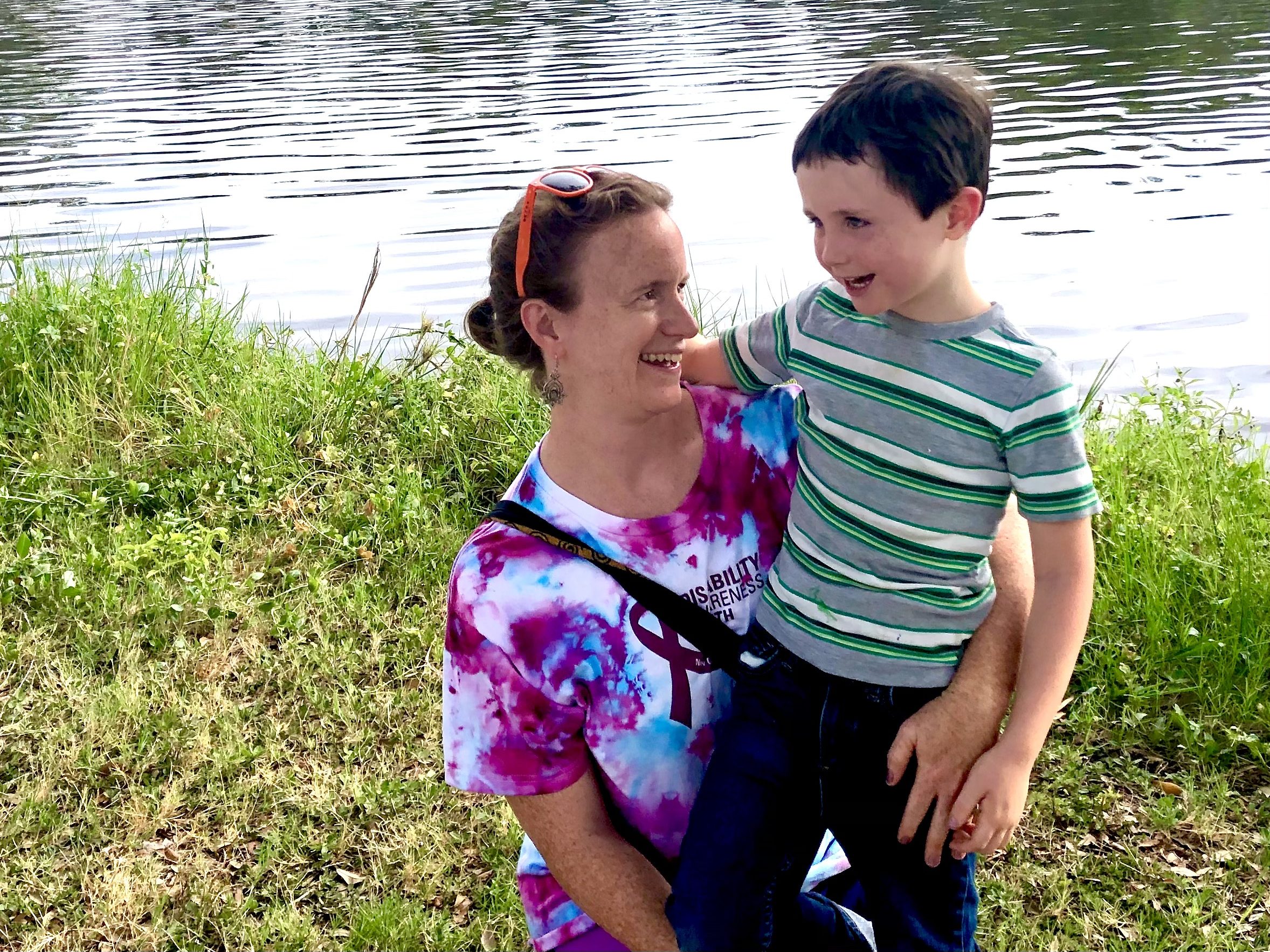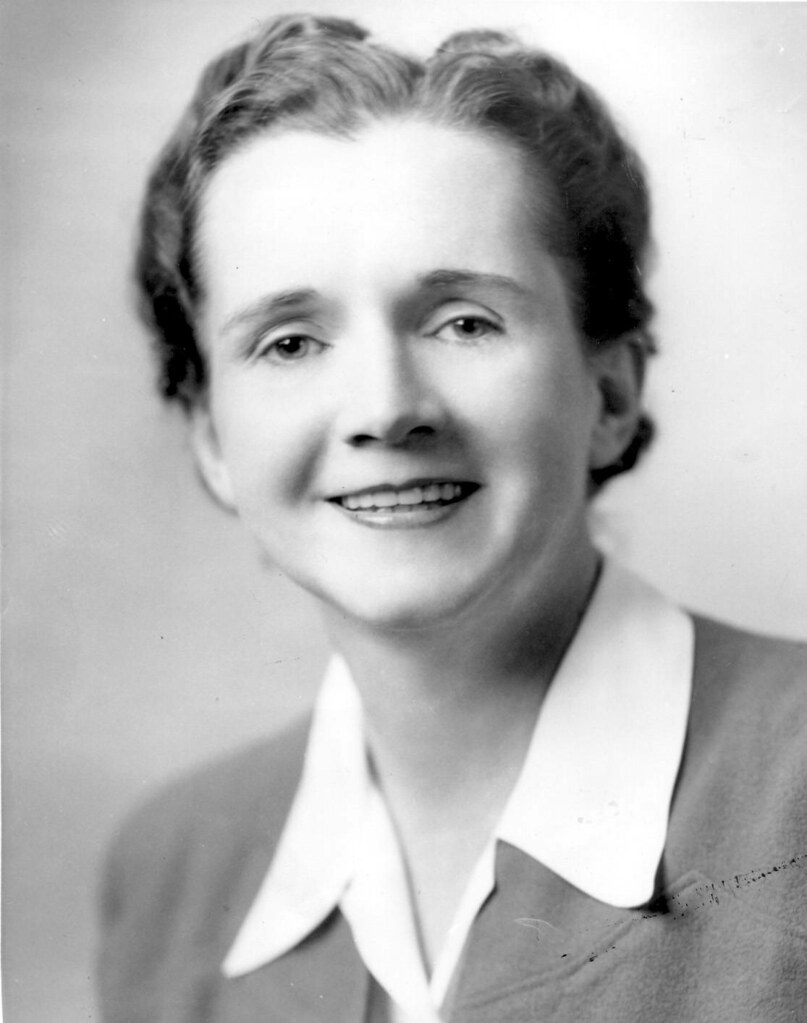
“Those who contemplate the beauty of the earth,” wrote Rachel Carson in 1956, “find reserves of strength that will endure as long as life lasts.” These words, taken from an essay titled “Help Your Child to Wonder,” were directed not at the bird watchers and beachcombers that were Carson’s most common readers, but at the homemakers and mothers who subscribed to Woman’s Home Companion.
By Amanda Hagood
As we head into summer breaks and extra time to spend with our kids, remember Carson’s point. Helping kids explore and connect with the natural world does not require a great deal of specialized knowledge or equipment—just a tolerance for “wet clothing” and “mud that has to be cleaned off the rug”–and that setting aside some quality time for Mother Nature can help kids and parents cultivate lifelong positive habits and values. As a parent, beachcomber, and aspiring birdwatcher, I find myself drawn to both ideas (with the possible Florida substitution of sand, not mud, on the rug).
Carson explored this notion by recounting, in her lyrical prose, the many rambles she and her four-year-old nephew, Roger, took in the woods and shoreline around her summer home in coastal Maine. From watching thunderstorms together at night, to peering into the “fairy land” of lichens on the forest floor with a magnifying glass, Carson showed how early exposure to the natural world fed Roger’s imagination and deepened the bond between them. More than anything, what she hoped he might take from these excursions was “a sense of wonder so indestructible that it would last throughout life, as an unfailing antidote against the boredom and disenchantments of later years, the sterile preoccupation with things that are artificial, the alienation from the sources of our strength.”
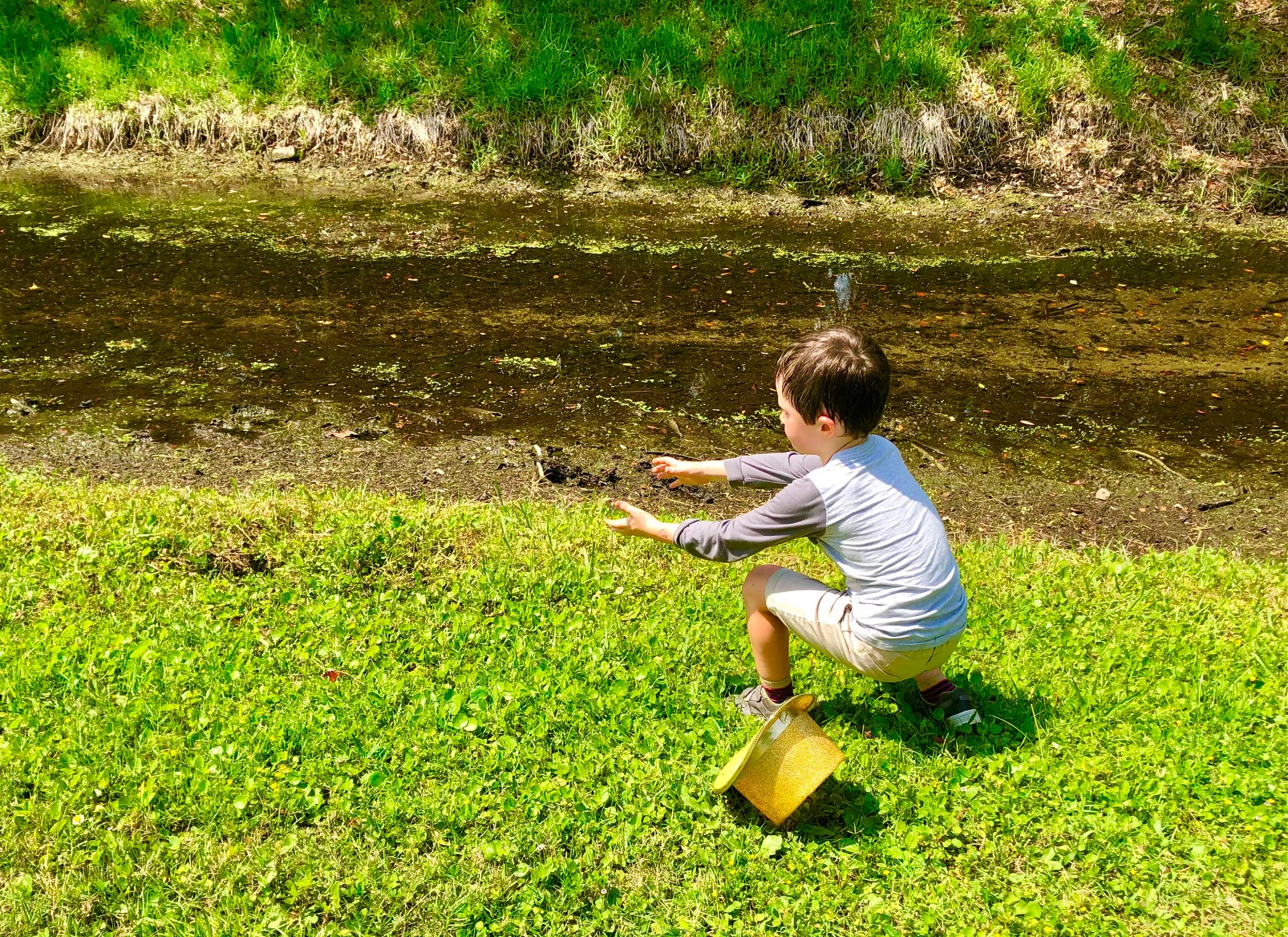 If I could talk with Rachel Carson today, I would thank her for these beautiful words, which ring so true to my own experience. My childhood was full of “Auntie Rachels” who took me hunting fossils and splashing in creeks, or allowed me to dig and play in the garden beside them. The things I discovered on these adventures stuck with me, but even more so did the love these caring adults felt for me and the places we would visit together.
If I could talk with Rachel Carson today, I would thank her for these beautiful words, which ring so true to my own experience. My childhood was full of “Auntie Rachels” who took me hunting fossils and splashing in creeks, or allowed me to dig and play in the garden beside them. The things I discovered on these adventures stuck with me, but even more so did the love these caring adults felt for me and the places we would visit together.
As an educator, I can also see how Carson’s ideas play out with students on the cusp of adulthood: helping them connect our work in the classroom to the world outside through experiential education can be one of the most effective strategies for teaching them course content as well as “bigger lessons”: things like how to respect and care for others, how to build a new skill and gain confidence, or how to listen to your own curiosity and trust your own creativity.
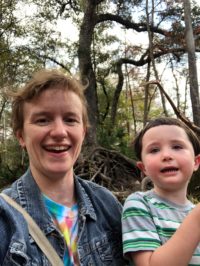 And now that I have a “Roger” of my own—my brilliant, boisterous, and headstrong comet of a five-year-old boy—our walks together in the wild seem to take on a moral significance. He is inheriting a Gulf Coast homeland that is both breathtakingly beautiful and deeply imperiled by global climate change; if a connection with nature is the “source of our strength,” then he is going to need a double dose. Teaching him to tap into deep reserves of wonder and turn them toward healing, protecting, and cherishing the world we share feels like one of the best gifts I can leave him.
And now that I have a “Roger” of my own—my brilliant, boisterous, and headstrong comet of a five-year-old boy—our walks together in the wild seem to take on a moral significance. He is inheriting a Gulf Coast homeland that is both breathtakingly beautiful and deeply imperiled by global climate change; if a connection with nature is the “source of our strength,” then he is going to need a double dose. Teaching him to tap into deep reserves of wonder and turn them toward healing, protecting, and cherishing the world we share feels like one of the best gifts I can leave him.
But, Rachel, I have a confession to make: sharing the Great Outdoors with my son is not always easy. Sometimes it is really hot outside. Sometimes I forget to bring snacks. And sometimes, no matter how I try to build it up, my boy is not interested in waiting for a ghost crab to appear at twilight or picking out the different strands of morning birdsong. He just wants to catch grasshoppers, pick up sticks, and pee on trees. Is this the sense of wonder you were talking about? I have my doubts.
But still, we try. It is a bright sunny morning and the two of us are going on a “nature walk” over to Wood Ibis Park, one of our favorite spots in our hometown of Gulfport, Florida. We are ready for adventure. He carries a fine new walking stick we found in the alley behind our house and a pair of old binoculars, which he stops to train on birds, cats, flowers, and me—hi, Sweetie!
Every time we go on such rambles, I think of a young Rachel Carson wandering the Pennsylvania woods with her mother, Maria McLean Carson. Maria, who had begun a career as a teacher, was a fervent follower of the Nature Study movement, an emerging pedagogy that upheld direct observation and interaction with plants and animals as a more suitable approach for young children to learn science than the standard textbooks of the day. Maria had used the Carson family property as a “sixty-four acre laboratory” for teaching her children walking lessons about the natural world. Echoes of her Nature Study philosophy can be found in Carson’s advice to parents: “If facts are the seeds that later produce knowledge and wisdom, then the emotions and the impressions of the senses are the fertile soil in which the seeds must grow.”
 I don’t have sixty-four rural acres to work with, but Wood Ibis Park is no less marvelous in its way. I love the story of how it came to be: a Mr. and Mrs. E. M. Steele moved in across the street in the 1960s, when it was a vacant lot. Well, not quite vacant: in the middle of the lot stood a giant dead pine tree where local ibis liked to roost. Every sunset, the birds filled its boughs with so many of their luminous white forms that it glowed, locals said, like a Christmas tree.
I don’t have sixty-four rural acres to work with, but Wood Ibis Park is no less marvelous in its way. I love the story of how it came to be: a Mr. and Mrs. E. M. Steele moved in across the street in the 1960s, when it was a vacant lot. Well, not quite vacant: in the middle of the lot stood a giant dead pine tree where local ibis liked to roost. Every sunset, the birds filled its boughs with so many of their luminous white forms that it glowed, locals said, like a Christmas tree.
With the city’s blessing, the Steeles began to tend this neighborhood “wilderness,” adding trees and flowers they watered with hoses stretched from their own spigots. It is said that Mrs. Steele would begin each day by greeting her pet tree, a fifty-foot eucalyptus she had grown from a sapling, with a hearty “Good morning, Eugene!” Though the Steeles and the old pine are gone (and so, I fear, is Eugene), this is still a beloved place for locals who want to connect to the more-than-human world.
A placid lake in the center of the park attracts ducks, herons, diving ospreys, and kingfishers that swoop and slice between water and sky. A trail of crushed quartz runs around the pond and winds past oaks, palms, pines, and lordly cypress trees. My favorite spot is on the far side, where the trail crosses an outflow and a bridge juts out over the sepia-colored water, providing a glimpse into the murky halls of bluegills, turtles, and stalwart blue crabs.
We had been coming here since my son was too young to walk, but the park took on new significance for us in the spring of 2020, when COVID-19 lockdowns and school closures stretched our days long and our spirits thin in so many ways. Carson explains that “exploring nature with your child is largely a matter of becoming receptive to what lies all around you. It is learning again to use your eyes, ears, nostrils and fingertips, opening up the disused channels of sensory impression.”
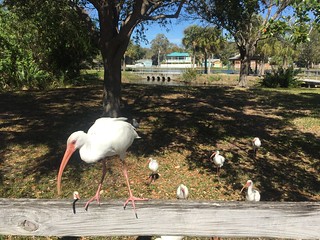 While our pandemic-era visits to the park had an educational element—we kept a “field notebook” and enjoyed looking up and writing down the new plants and animals we found—they were also, in a more profound way, about feeding starved senses and grounding our anxious minds in something tangible and certain. Here, we could feel warm sunlight on our faces, catch the flash and flicker of wings alighting, breathe in the sweet resin of cypress trunks. I grew especially fond of the pond’s turtles, which clustered around the bridge whenever we crossed it (somebody is probably feeding them—tsk, tsk!). With delicate snouts just breaking the surface and bright yellow eyes watching intently, they reminded me of children listening to a story.
While our pandemic-era visits to the park had an educational element—we kept a “field notebook” and enjoyed looking up and writing down the new plants and animals we found—they were also, in a more profound way, about feeding starved senses and grounding our anxious minds in something tangible and certain. Here, we could feel warm sunlight on our faces, catch the flash and flicker of wings alighting, breathe in the sweet resin of cypress trunks. I grew especially fond of the pond’s turtles, which clustered around the bridge whenever we crossed it (somebody is probably feeding them—tsk, tsk!). With delicate snouts just breaking the surface and bright yellow eyes watching intently, they reminded me of children listening to a story.
This park was our refuge, our happy place when the world around us seemed to be falling apart. But not so much today. By the time we have walked the four blocks to get there, we are feeling the heat and humidity — we look a little like gently steamed puddings. We flop on a bench to rest for a minute. From under his gold-sequined top hat—I am trying to teach him to wear a hat, since he sunburns easily, and this is the one he has chosen for today—my son surveys the scene, looking skeptical. The pond is a dull mirror and the trail a white blaze under the climbing sun.
 “Mommy,” he says, “here’s the thing. I’m getting sweaty.”
“Mommy,” he says, “here’s the thing. I’m getting sweaty.”
I see where this is going. “Have some water,” I say, offering him our bottle.
“That path looks hot to walk on.”
“Hmm. It does. Maybe we could stay in the shade of the trees.”
“There aren’t any trees on that side of the pond.”
“Ok, then let’s just walk as far as the bridge. That way I can check on my turtles.”
“They’re not your turtles!” he objects, his voice rising to a whine. “That’s a mean thing to say.” He is quoting the gospel of shared toys at daycare, a lesson that has been tough for this only child to learn.
“Okay,” I say, pushing down my exasperation. We’ve only just gotten here! “Let me find a better way to say that. They are not my turtles. They are turtles that I love. And I want to go and check on them.”
He heaves a heavy sigh. “Oh-kay.”
As we take to the path, I know I am working on borrowed time. I recall sourly that the students in Nature Study lessons are never hot, tired, hungry or cranky, and they certainly do not yearn to be at home sitting in the air conditioning. I cast around in quiet desperation, looking for something besides the heat to engage his senses. I suggest we hunt for wild cucumbers, whose vines grow in luxuriant tangles around the north side of the pond. An aeration pump surges to life and I exclaim, “Oh look, a fountain!” But nothing takes. Until we spot her.
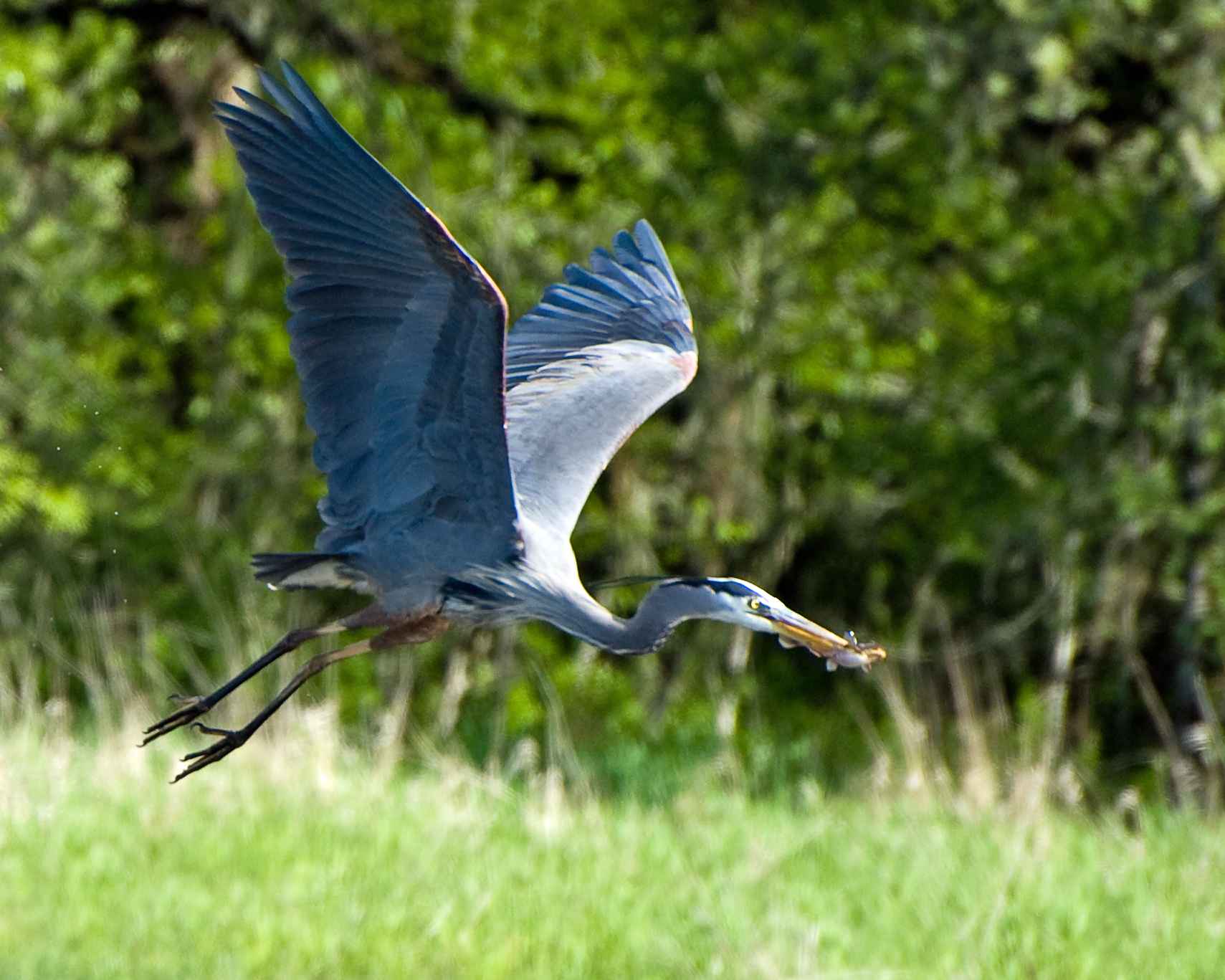 She is an elegant little blue heron, crisscrossing the path in front of us, cautiously staying ten or twelve strides ahead. Her neck unwinds before each step, her yellow eyes fixed in that permanent look of indignation all herons seem to wear. But it is her shimmering mauve blue plumage that captures his attention. “Mommy, she’s so blue!” he cries. “Her legs are blue! Even her beak is blue!”
She is an elegant little blue heron, crisscrossing the path in front of us, cautiously staying ten or twelve strides ahead. Her neck unwinds before each step, her yellow eyes fixed in that permanent look of indignation all herons seem to wear. But it is her shimmering mauve blue plumage that captures his attention. “Mommy, she’s so blue!” he cries. “Her legs are blue! Even her beak is blue!”
I try coaxing his curiosity a bit. “I wonder why she is so blue?”
“Because she loves the water!” he says. I think, with a smile, of his crayon drawings of water at home, streaked with bright shades of turquoise, teal and cerulean. He loves the water, too. I think of his beloved blue socks and shorts, the time we dyed his hair blue just for fun. “Why do you think she loves the water?” I ask. We talk about hunting for fish, her spear-like bill, and her long, graceful legs. What would it be like to have such legs? “Let’s walk like herons!” I exclaim. We fold our arms into wings, train our legs into slow, deliberate steps, wobble our heads as though they sat atop long, snake-like necks. We dissolve into laughter—and find a moment of grace in the shade of a pine tree.
By the time we reach the far side of the pond, however, we are feeling the heat again. “Let’s go back, Mommy,” he groans. I explain that going back at this point would take as long as going forward. This doesn’t go over well. Finally, he flops down onto a sunny bank near the bridge, where the outflow channel forms a shallow lagoon. He looks hot, tired, bored—just DONE. I picture the hundreds of images I have seen in Christmas cards and social media feeds of friends having what looks like an effortlessly good time with their young children outdoors. I wonder what I am doing wrong.
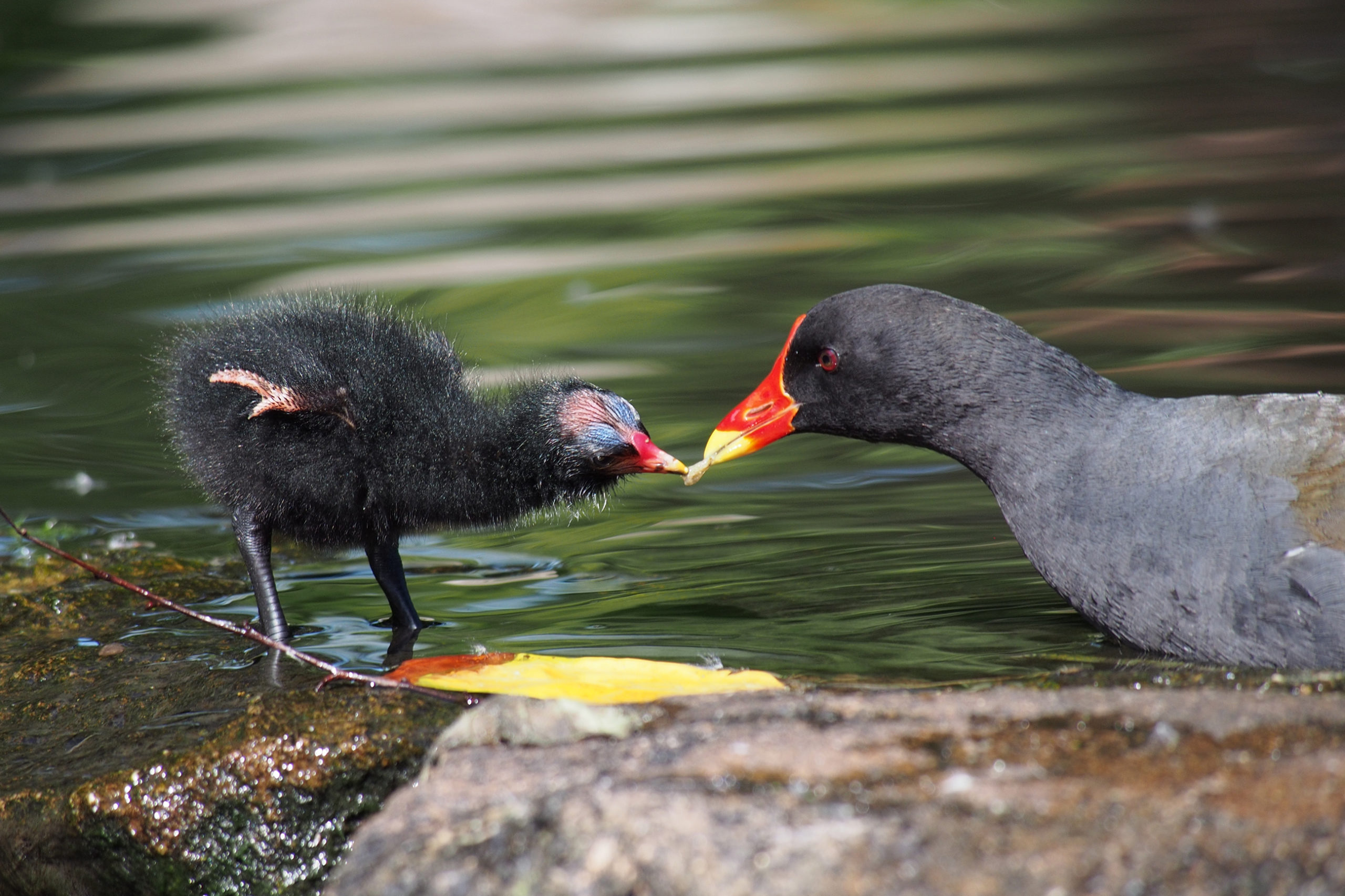
Then I hear moorhens making their scuffed-sneaker calls in the undergrowth; I will later discover that they shepherd a band of fluffy gray chicks. A passing jogger—a turtle devotee like myself, apparently—tells us that my favorite reptiles are sunning by the bridge, just a few steps away. “Should we go and see them?” I ask hopefully. “Too tired!” he says. “Okay,” I tell him. “I’m going to go and take a look myself. I will be right back.” As I step onto the bridge, three turtles slide back into the murk and paddle over. In a moment, they are joined by four others, forming a loose constellation of yellow eyes on the dark surface of the pond. My heart glows. Oh, turtles.
But when I turn back to my son, I get an even better surprise: he has discovered that the bright bank where he was sitting is alive with delicate butterflies grazing the beach buttercup flowers, so small we did not even notice them before. Tiny wings hover and flit, dancing in the sunlight. He is wide-eyed and laughing, doing a dance of his own as he crouches to get a closer look at their busy tongues, reaches out to charm them onto his outstretched finger, then springs up trying to trap one under his sparkly hat.
Suddenly, I flash back to a memory of myself at his age, chasing a seemingly endless variety of butterflies through the pink and orange zinnias, the pale purple coneflowers that were the pride of my grandmother’s garden. I am also struck suddenly by words from the poet William Blake: “He who binds to himself a joy / Does the winged life destroy / He who kisses joy as it flies / Lives in eternity’s sunrise.” I snap a picture of a nectaring butterfly for identification purposes later on. Then I snap about a million pictures of my son kissing joy by the creek.
Ok, Rachel (and William), I think I get it now: the sources of wonder—that deep-rooted feeling that binds us to the more-than-human world—are as mysterious and as distinctive as each human being. We can seek and summon wonder, and even, as so many religions teach, cultivate a state of mind that makes us ready to receive enlightenment. But in the end, the feeling comes to us when it is ready, and in forms as varied as ourselves. My son may never understand my fascination with the turtles of Wood Ibis pond, how I would exult in swimming with them from the sunny surface down into the primordial muck and mystery of the universe, if only my lungs allowed. But he does not need to. He must and will take the lead in his own love story with the earth, while I bring up the rear of that glorious parade with as much patience and wisdom as I have—and maybe some extra snacks.
On the walk home, he is feeling better, and does not mention the distance or the heat. But he does say one more thing that absolutely stuns me: “Mommy,” he asks, “what is it like to be a bee?” I have no idea where this question comes from, and less idea how to answer it in a way that makes sense. So naturally, I start to sing: “Oh, to be a bee! You’d see like a bee, be like a bee, be free like a bee!” Somebody should send me back the Hundred Acre Wood. The line of questioning continues as we walk, but he seems stuck on a particular point: “Remember when I saw the bees?” You will have to be more specific. We have looked at bees together dozens of times. He keeps asking, and I keep suggesting different moments I can remember, none of them quite what he is looking for. Then he stops in his tracks and points up at the yellow poinciana in our neighbors’ yard. “Oh. There it is.”
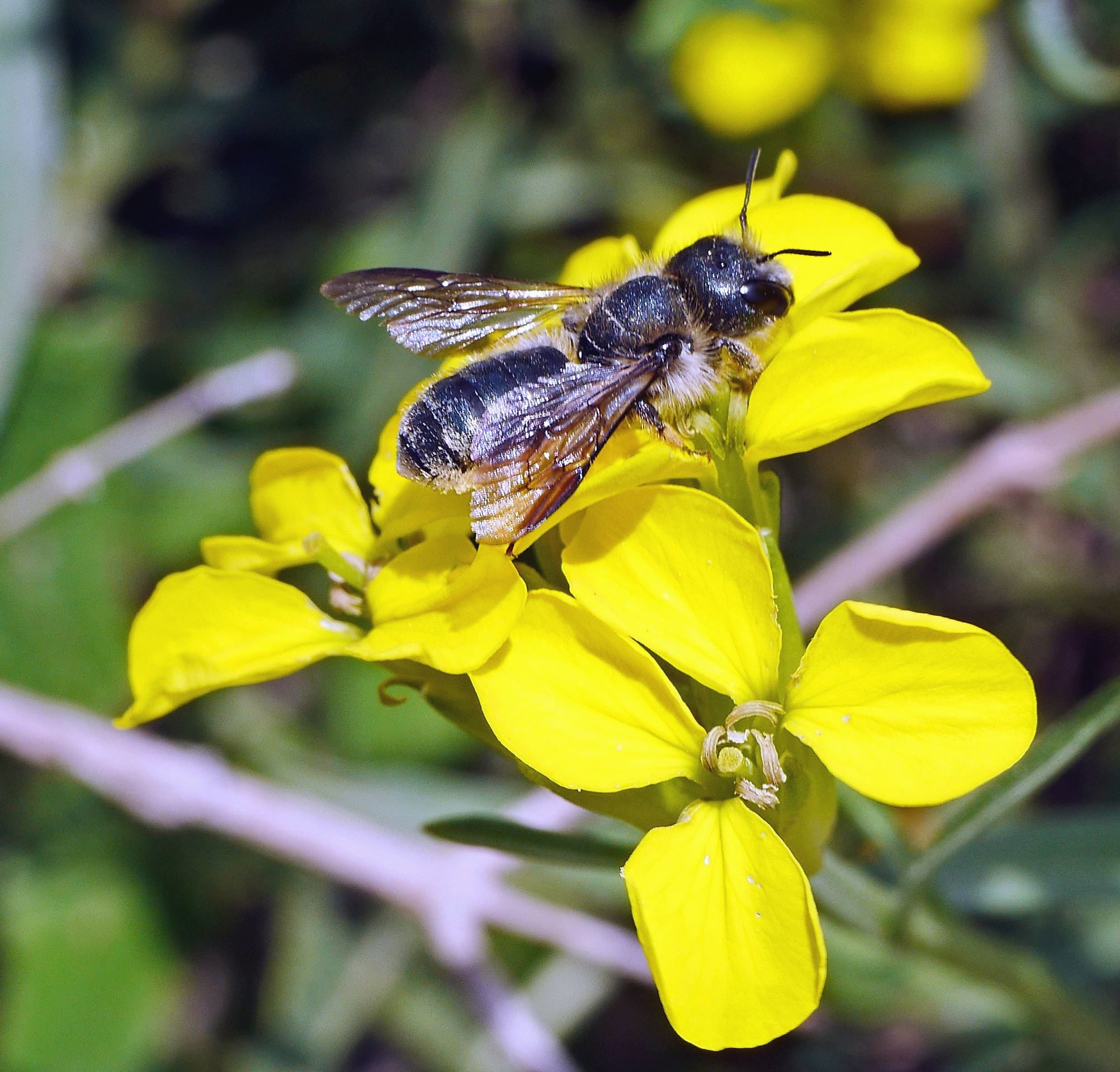 Immediately, I remember what he is talking about. In late August, the year he was two, I parked my car as always under that same tree, barely noticing the golden cloud of its flowers twenty feet above. From his car seat in the back, he began to whimper “We can’t get out, we can’t get out!” clearly alarmed about something. When I followed the pointing of his little finger upward, I saw what he meant: the flaming yellow blossoms above were shimmering with bees, hundreds of them. No danger to us in reality, of course, but having been warned many times not to touch, this mist of bees must have looked like a formidable threat. I can’t believe he remembered that.
Immediately, I remember what he is talking about. In late August, the year he was two, I parked my car as always under that same tree, barely noticing the golden cloud of its flowers twenty feet above. From his car seat in the back, he began to whimper “We can’t get out, we can’t get out!” clearly alarmed about something. When I followed the pointing of his little finger upward, I saw what he meant: the flaming yellow blossoms above were shimmering with bees, hundreds of them. No danger to us in reality, of course, but having been warned many times not to touch, this mist of bees must have looked like a formidable threat. I can’t believe he remembered that.
And that’s just the point. Carson talks about the persistence of such memories laid down at young age, as when her Roger was allowed to stay up late to watch a thunderstorm roll in: “I think we have felt that the memory of such a scene, photographed year after year by his child’s mind, would mean more to him in manhood than the sleep he was losing.” The scenes of wonder we remember, whether joyful, awe-inspiring, or foreboding, shape the people we become and the world as we know it. Part of loving and caring for a person, just like loving and caring for any living thing, is to appreciate that their life grows beyond yours, and enriches your life with a poetry that is all its own. Your son is not your person, Mommy. He is the person that you love.
Amanda Hagood lives in Gulfport and teaches courses in environmental humanities at Eckerd College. Her work has been published in Interdisciplinary Studies in Literature and the Environment, Salt Creek Journal, and Environmental Humanities. Her favorite hike in Florida is still her first: a visit to Boyd Hill between appointments looking for a place to live. She and her partner were a little dispirited because none of the options were great. “But then we spent one hour walking the trails there and I said, ‘I don’t care where we sleep, can we just be sure to come here every day?’ And they ended up renting a lovely little house just a couple of blocks away.
